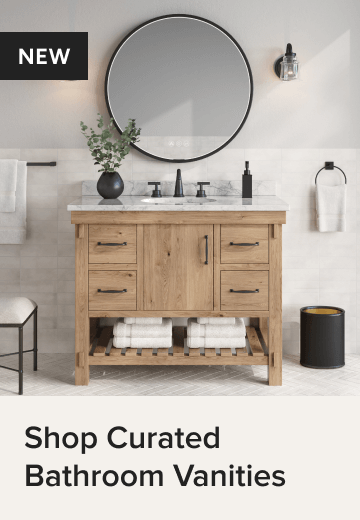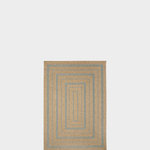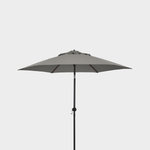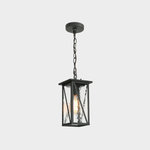Bathroom Design
Baby Boomers Are Making Remodeling Changes With Aging in Mind
Walk-in tubs, curbless showers and nonslip floors are popular features, the 2018 U.S. Houzz Bathroom Trends Study finds
Baby boomers comprise more than half of those in the home renovation market, and the majority plan to stay in their homes a decade or more. As they look to the future, many are planning for aging-related needs in their homes, according to new data from the 2018 U.S. Houzz Bathroom Trends Study.
The study includes responses from more than 1,100 registered users of Houzz who had completed a master bathroom remodel in the previous 12 months, are currently working on one or are planning to start one in the next three months.
The study includes responses from more than 1,100 registered users of Houzz who had completed a master bathroom remodel in the previous 12 months, are currently working on one or are planning to start one in the next three months.
Boomers aren’t the only ones thinking about the needs of aging household members. Eight percent of renovating homeowners ages 25 to 54 are or were planning master bathroom renovations that address current needs of aging household members, as seen in the chart here.
Another 30 percent of this younger group say they are or were addressing future needs of aging household members. This data could indicate that younger family members are thinking about their parents as they renovate, or perhaps about future needs for themselves.
Renovating homeowners also are considering special needs unrelated to aging, including those of household members with disabilities and those of children and pets.
Only a small number of homes are currently accessible to people with disabilities, the Harvard study found. As of 2011, just 3.5 percent of housing units in the U.S. have single-floor living, a no-step entry and extra-wide hallways and doors to accommodate a wheelchair, the report says.
Find a bathroom designer near you
Another 30 percent of this younger group say they are or were addressing future needs of aging household members. This data could indicate that younger family members are thinking about their parents as they renovate, or perhaps about future needs for themselves.
Renovating homeowners also are considering special needs unrelated to aging, including those of household members with disabilities and those of children and pets.
Only a small number of homes are currently accessible to people with disabilities, the Harvard study found. As of 2011, just 3.5 percent of housing units in the U.S. have single-floor living, a no-step entry and extra-wide hallways and doors to accommodate a wheelchair, the report says.
Find a bathroom designer near you
This bathroom include a curbless shower with a bench seat and a grab bar.
Aging Is Driving Layout Changes, Shower Upgrades and Tub Removal
Baby boomers focused on aging-related changes while renovating their master bathrooms are shifting their bathroom layouts more often (47 percent) than boomers not addressing aging-related needs (35 percent of whom are or were making layout changes).
Boomers focused on aging needs are also choosing more accessibility features for their bathroom remodels. The bathroom in this photo has multiple aging-related features (curbless shower, bench seat, grab bar). It also could accommodate a wheelchair; there is room for one beneath the sink and also at the vanity on the back wall.
Baby boomers addressing aging-related changes while renovating their master bathrooms are more likely to install shower features such as a shower seat, a low shower curb or no curb, and grab bars, compared to boomers who are not focused on aging.
Browse shower benches and seats in the Houzz Shop
Aging Is Driving Layout Changes, Shower Upgrades and Tub Removal
Baby boomers focused on aging-related changes while renovating their master bathrooms are shifting their bathroom layouts more often (47 percent) than boomers not addressing aging-related needs (35 percent of whom are or were making layout changes).
Boomers focused on aging needs are also choosing more accessibility features for their bathroom remodels. The bathroom in this photo has multiple aging-related features (curbless shower, bench seat, grab bar). It also could accommodate a wheelchair; there is room for one beneath the sink and also at the vanity on the back wall.
Baby boomers addressing aging-related changes while renovating their master bathrooms are more likely to install shower features such as a shower seat, a low shower curb or no curb, and grab bars, compared to boomers who are not focused on aging.
Browse shower benches and seats in the Houzz Shop
This bathroom features a walk-in tub.
Those Addressing Aging Are Making More Changes to Tubs
More boomers addressing aging-related needs in their master bathroom renovations say they have removed or are planning to remove the bathtub altogether (34 percent), compared with boomers not focused on aging (20 percent).
Some boomers focused on aging-related needs in their master bathroom renovations and who are keeping a tub are making changes to make their tubs more safe. More specifically, these boomers are including bathtub features like a nonslip floor, grab bars or a tub seat, or are switching to a walk-in tub (as in this photo), which typically has a door.
The 2018 U.S. Bathroom Trends Study gathered information from 2,237 registered users of Houzz and included a final sample of 1,144 respondents with a master bathroom project, 580 with a full nonmaster bathroom project and 120 with a partial bathroom project. It was fielded between June 30 and October 17, 2018.
Download the full study here
More
Homeowner’s Workbook: How to Remodel Your Bathroom
Read stories on Houzz about remodeling with aging in mind
See more photos of curbless showers
Those Addressing Aging Are Making More Changes to Tubs
More boomers addressing aging-related needs in their master bathroom renovations say they have removed or are planning to remove the bathtub altogether (34 percent), compared with boomers not focused on aging (20 percent).
Some boomers focused on aging-related needs in their master bathroom renovations and who are keeping a tub are making changes to make their tubs more safe. More specifically, these boomers are including bathtub features like a nonslip floor, grab bars or a tub seat, or are switching to a walk-in tub (as in this photo), which typically has a door.
The 2018 U.S. Bathroom Trends Study gathered information from 2,237 registered users of Houzz and included a final sample of 1,144 respondents with a master bathroom project, 580 with a full nonmaster bathroom project and 120 with a partial bathroom project. It was fielded between June 30 and October 17, 2018.
Download the full study here
More
Homeowner’s Workbook: How to Remodel Your Bathroom
Read stories on Houzz about remodeling with aging in mind
See more photos of curbless showers


















Baby Boomers Are Planning for Aging-Related Needs at Home, as Are Younger People
More than half of boomers (56 percent) are addressing aging-related needs as part of their master bathroom remodel, the study found. For 35 percent of these boomers, the needs are current, while 21 percent say they are planning for future needs.
Baby boomers are defined in the survey as people age 55 or older. This cohort represents 52 percent of renovating homeowners.
And just as this new data from Houzz came out, a new report from the Joint Center for Housing Studies of Harvard University reported that 65 million households — more than half of the households in the U.S. — are now headed by someone 50 years old or older. The Harvard report says baby boomers will increasingly need more accessible and supportive housing than what is available — so it’s good that some renovating homeowners are planning ahead.